Discover how to unlock your creative potential and elevate your coastal and landscape photography game with expert tips and timeless advice on capturing the essence of seascapes. Whether you’re a seasoned photographer or just dipping your toes into the world of coastal imagery, this guide offers a wealth of insights to help you craft stunning photos that do justice to the beauty of our oceans and shorelines. From mastering composition and lighting techniques to exploring the best equipment for the job, we’ve got you covered. Dive in and let your inner artist run wild!
Key Takeaways
– Capture Stunning Seascapes: Use low light conditions and ND filters to create dramatic colors and textures.
– Long Exposures for Motion: Experiment with exposures between 10-30 seconds to transform wave motion into ethereal patterns.
– Reflective Beauty: Seek out reflections and vibrant color palettes during sunrise or sunset for rich hues and dynamic compositions.
– Explore Unique Angles: Don’t limit yourself to waist-level shots—try below, above, or straight down for hidden textures.
– Enhance Mood Through Editing: Adjust colors, contrast, and tones in post-processing to elevate your seascapes.
- Top Cameras for Seascapes: Choose models like the Sony a7R III, Nikon D850, or Panasonic Lumix GH5 for high-resolution and advanced features.
- Essential Gear: Use wide-angle lenses, tripods, and water-resistant cameras to handle diverse conditions.
- Budget-Friendly Option: The Fujifilm X-T3 offers professional-grade quality at an accessible price.
- Masterful Composition: Apply the rule of thirds, leading lines, and symmetry to create balanced and engaging compositions.
- Creative Techniques: Experiment with panning shots, macro photography, and low-angle shooting to capture unique perspectives.
- Post-Processing Excellence: Use software like Adobe Lightroom for detailed adjustments and noise reduction to maximize your images.
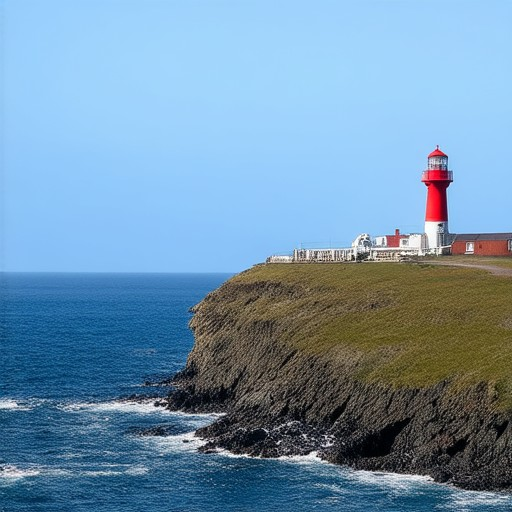
What Do Seascapes Symbolize?
Seascapes symbolize a variety of profound concepts, each contributing to their rich tapestry of meanings:
- Infinity and Boundlessness : The endless expanse of the ocean mirrors the boundless opportunities and vast possibilities in life, encouraging exploration and curiosity.
- Calm and Serenity : The gentle rhythm of waves and the vast, open space evoke feelings of peace and tranquility, offering a sanctuary for reflection and emotional healing.
- Adventure and Exploration : The sea has historically been a realm of discovery, symbolizing the courage and spirit required for voyaging into the unknown.
- Resilience and Adaptation : The cyclical nature of tides and waves reflects the enduring strength needed to navigate life’s challenges and uncertainties.
- Freedom and Liberation : The open expanse of the sea represents liberation from constraints, embodying a sense of unrestricted potential and personal freedom.
- Connection to Nature : Seascapes highlight the profound relationship between humans and the natural world, underscoring the importance of harmony and environmental stewardship.
- Mystery and Enigma : The ocean’s depths hold secrets, symbolizing the unknown and the divine, sparking intrigue and wonder.
- Risk-Taking and Boldness : The unpredictable nature of the sea encourages individuals to embrace uncertainty and take daring leaps in pursuit of their goals.
Together, these symbols paint a vivid picture of the sea’s significance, offering insight into its cultural, emotional, and inspirational roles across human history.
What Makes a Good Seascape Painting?
A good seascape painting captures the essence of the ocean, its moods, and its beauty. Here are the key elements that contribute to creating a compelling piece:
Composition
- Balance : A well-composed seascape balances elements like the horizon, sky, and water. Proper placement of these elements creates a harmonious visual appeal.
- Focal Point : Introduce a focal point, such as a boat, wave, or distant island, to draw the viewer’s eye and add depth to the scene.
- Symmetry and Asymmetry : Use symmetry for calm scenes and asymmetry for dynamic, rough waters to reflect the ocean’s movement and energy.
Color Harmony
- Primary Colors : Use primary colors like blue, green, and yellow to mimic the ocean’s hues.
- Secondary Colors : Incorporate secondary colors like purple and orange to add vibrancy and depth.
- Contrast : Balance bright colors with darker tones to create contrast and make the painting stand out.
Lighting
- Natural Light : Capture the effect of sunlight, such as during sunrise or sunset, to add warmth and drama.
- Shadows and Highlights : Use shadows to create dimension and highlights to emphasize key features like waves or reflections.
Realism vs. Abstraction
- Realistic Details : Paint intricate details like wave textures, boat rigging, or coral reefs for photorealistic effects.
- Abstract Elements : Use loose brushstrokes or bold colors to convey emotions and reduce realism, focusing on the mood rather than precise details.
Emotional Impact
- Mood Creation : Use color, light, and texture to evoke feelings like calmness, serenity, or excitement.
- Storytelling : Incorporate elements that suggest a narrative, such as a lone boat facing a stormy sea or peaceful calm before a storm.
Focal Points and Depth
- Guiding Eye : Place objects like boats, lighthouses, or islands to guide the viewer’s gaze and add interest.
- Layering : Build layers of elements, from the far-off horizon to the foreground details, to create depth and dimension.
Subject Matter
- Ocean Scenery : Focus on vast stretches of water, crashing waves, or tranquil bays.
- Environmental Context : Include elements like weather (clouds, rain), seasons (icebergs, autumn leaves), or marine life to enhance the scene.
Attention to Detail
- Texture : Add texture through waves, sand, or wind patterns to make the painting visually engaging.
- Unique Perspectives : Capture the ocean from unusual angles, like a low vantage point or dramatic overhead views, to offer fresh takes on familiar subjects.
Truth to Reality
- Accuracy : Stay true to the ocean’s behavior, such as how light reflects off water or how waves interact with rocks.
- Artistic License : Allow yourself creative freedom to interpret the scene, adding artistic flair while maintaining a connection to reality.
By thoughtfully considering these elements, artists can create seascape paintings that are visually stunning, emotionally resonant, and uniquely their own.

Who is the famous artist of seascapes?
J.M.W. Turner is widely regarded as one of the most famous artists to depict seascapes. Known for his dramatic and atmospheric paintings, Turner spent much of his career capturing the power and beauty of the sea along the British coast.
- Turner, J.M.W. – Renowned for his seascapes, Turner’s works often conveyed the dynamic nature of the ocean and its impact on coastal landscapes.
- Claude Monet – While famous for his water gardens, Monet also created notable seascapes, particularly during his time in Normandy.
- Winslow Homer – A prominent American artist known for his marine scenes, Homer’s works often depicted the New England coastline.
- Edward Hopper – Known for his sharp, realistic depictions of light and shadow, Hopper’s seascapes capture the essence of coastal environments.
- Annie Kellermann – A contemporary artist known for her bold and expressive seascapes, blending vibrant colors and abstract forms.
- The Cosmic Suburbans – A collective of artists including Marsden Gomberg and John McLaughlin, whose work merges surrealism with seascapes.
- Hudson River School – Artists like Albert Fitch Tyler painted grand coastal views, contributing to the seascAPE tradition.

How to Take Pictures of Seascapes
To capture stunning seascapes, consider the following tips and techniques:
1. Utilize Low Light Conditions
Seascapes often require shooting during low light or golden hours to capture the dramatic colors and textures of the ocean. Use tools like ND filters to extend your shutter speed and create long exposures.
2. Experiment with Long Exposures
Long exposures can transform the motion of waves into ethereal patterns. Start with settings around 10-30 seconds and adjust based on the lighting conditions. A sturdy tripod is essential to keep your camera steady during extended shots.
3. Capture Reflections and Color Palettes
Look for reflections off the water surface and vibrant color palettes during sunrise or sunset. These moments offer unique opportunities to create visually striking seascapes with rich hues and dynamic compositions.
4. Explore Different Angles
Don’t stick to just waist-level shots. Try experimenting with angles from below, above, or even looking straight down to reveal hidden textures in the water and surrounding environments.
5. Edit for Balance and Mood
After capturing your shots, use photo editing software like Adobe Lightroom or GIMP to adjust colors, contrast, and tones to enhance the mood and balance of your seascapes.
By combining these techniques and leveraging the right equipment, you can create seascapes that truly capture the essence of the ocean’s beauty.
Best Camera for Seascapes
When searching for the best camera for seascapes, it’s essential to consider factors like image quality, sensor size, lens versatility, and additional features that enhance your photography.
Top Picks for Seascapes
- Sony a7R III: Known for its impressive 42.4MP full-frame sensor and excellent dynamic range, the a7R III excels in capturing intricate details of seascapes. Its robust autofocus system ensures sharpness, even in challenging lighting conditions.
- Nikon D850: With a 45MP FX-format sensor, the D850 offers high-resolution imaging and outstanding low-light performance, making it ideal for capturing the nuances of ocean scenes.
- Canon EOS R5: As a mirrorless option, the EOS R5 combines a 20.2MP CMOS sensor with fast autofocus and 4K video capabilities, suitable for dynamic seascapes.
- Panasonic Lumix GH5: This compact mirrorless camera boasts a 16MP Micro Four Thirds sensor and excellent color accuracy, making it a favorite among professionals for its vibrant image reproduction.
Considerations for Seascapes
- Lens Selection: Opt for a wide-angle lens to capture the vastness of the ocean. A tripod ensures stability, particularly for long exposures.
- Water Resistance: Many modern cameras offer water-resistant bodies, making them suitable for beach photography or underwater shots.
- Filters: Utilize a circular polarizing filter to reduce glare and enhance color vibrancy. Neutral Density (ND) filters help manage exposure during slow shutter speeds.
Budget-Friendly Options
- Fujifilm X-T3: A compact camera with a 26MP APS-C sensor, delivering professional-grade image quality at an accessible price point.
Post-Processing
Invest in software like Adobe Lightroom or DxO to enhance your seascapes through detailed adjustments and noise reduction, maximizing the potential of your captured images.
By selecting a camera with these features and equipping it with the right accessories, you can capture the stunning beauty of seascapes with precision and creativity.
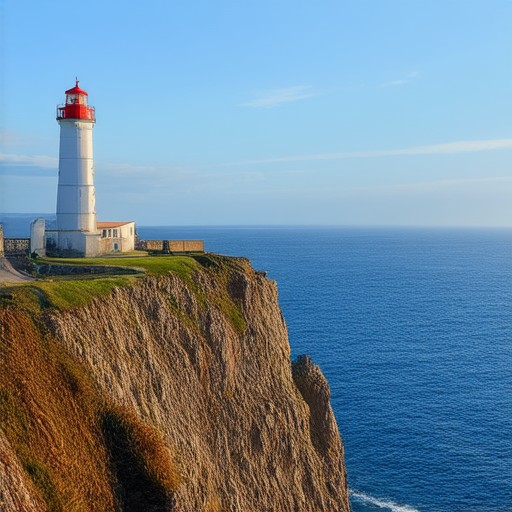
How to Create a Sea Picture
Creating a stunning sea picture involves combining artistic vision with technical skills. Here’s a step-by-step guide to help you capture the beauty of the ocean:
- Equipment Setup
- Camera Choice: Use a high-quality camera with excellent underwater capabilities for diving shots or a sturdy DSLR for shore photography.
- Lens Selection: Opt for a wide-angle lens to capture vast ocean scenes or a telephoto lens for detailed wildlife shots.
- Tripod Usage: A tripod ensures stability, especially in windy conditions or when using slow shutter speeds.
- Filters: Neutral density (ND) filters can help balance light exposure in bright conditions, while polarizing filters enhance color and contrast.
- Shooting Techniques
- Golden Hour: Capture the dramatic lighting of sunrise or sunset over the sea for warm, inviting tones.
- Panning Shots: Move the camera horizontally while depressing the shutter to create dynamic motion blur in waves.
- Low Angle Shooting: Get below the horizon to emphasize the vastness and scale of the ocean.
- Macro Photography: Explore tiny marine life with macro settings for intricate details.
- Composition Tips
- Leading Lines: Use lines in the foreground (e.g., rocks, ships) to draw the viewer’s eye toward the horizon.
- Rule of Thirds: Position elements within the frame to create balanced compositions.
- Symmetry: Look for symmetrical subjects like reflections or evenly spaced islands.
- Post-Processing
- Software Use: Edit your photos using professional tools like Adobe Lightroom or GIMP for adjustments like exposure, color correction, and noise reduction.
- Cropping: Trim unnecessary elements to focus on the main subject.
- Color Adjustment: Enhance the vibrant blues and greens of the ocean using advanced editing techniques.
By mastering these techniques and tips, you can create mesmerizing sea pictures that showcase the ocean’s beauty and diversity. Don’t forget to share your creations with fellow enthusiasts and join communities like Sailing Photo Awards to inspire others!
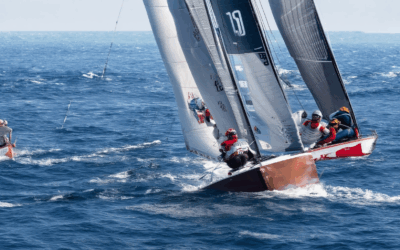
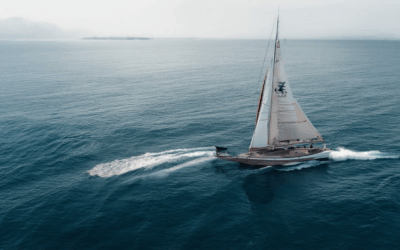
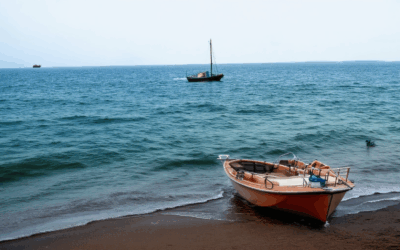
0 Comments